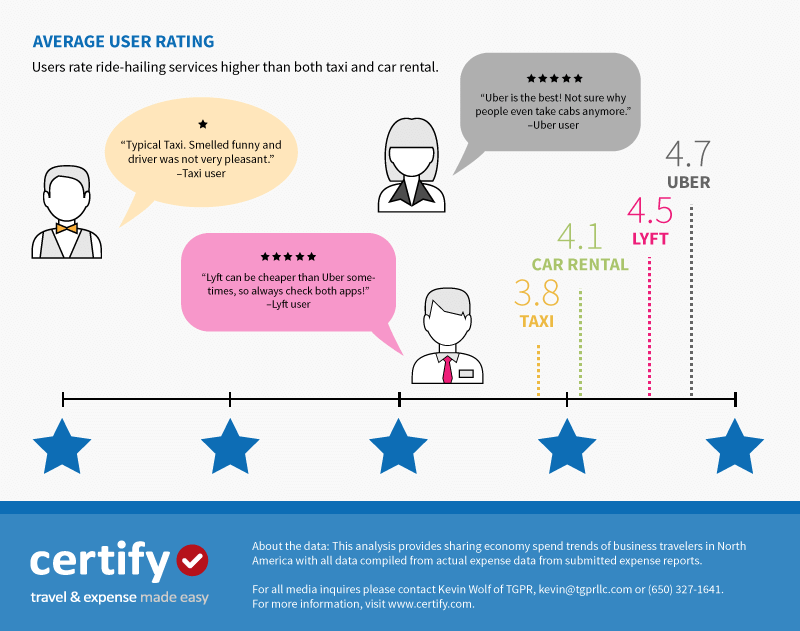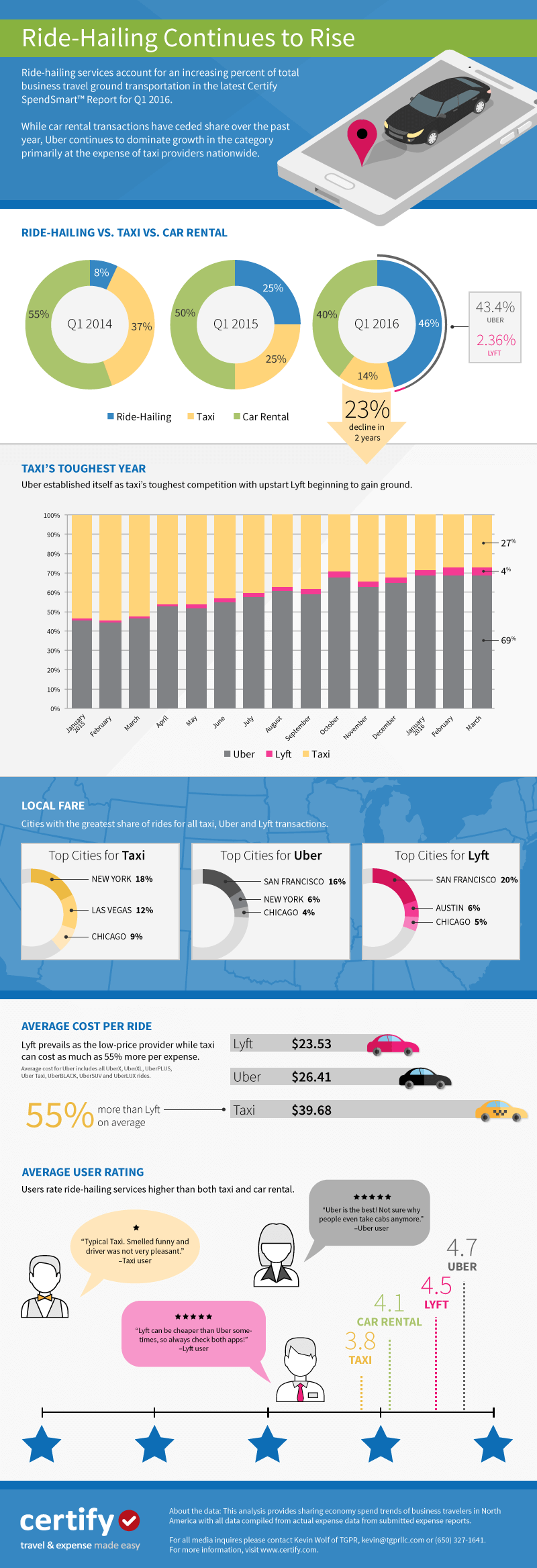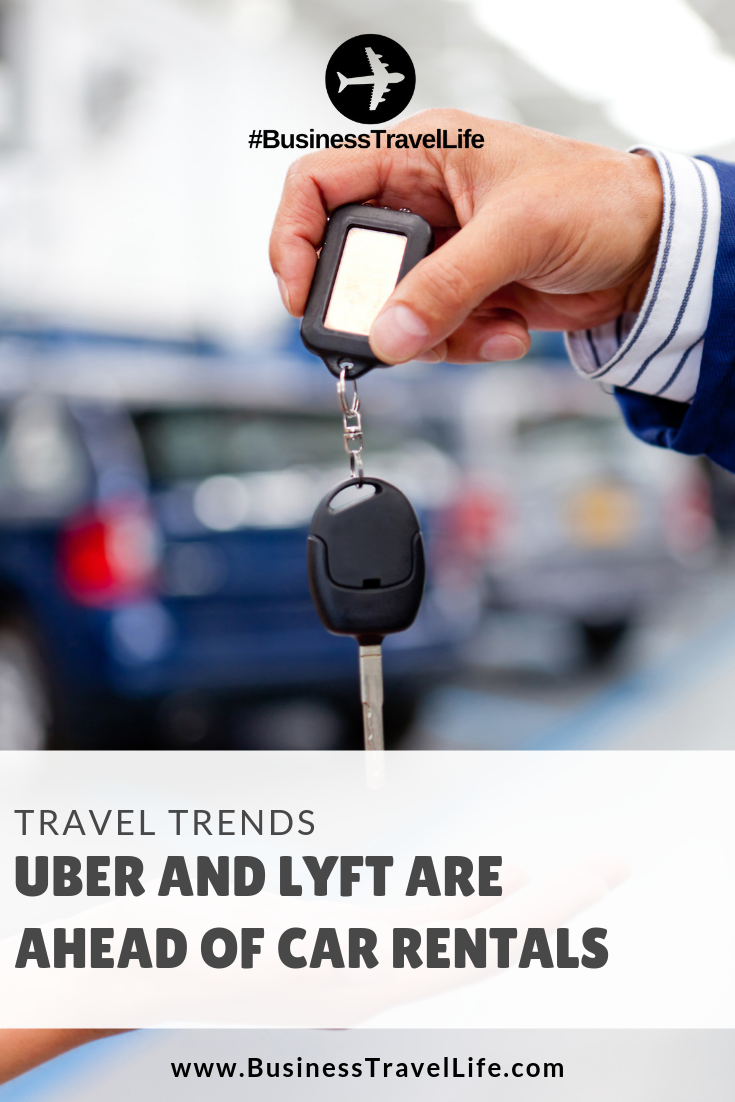Data shows ground transportation preferences are shifting dramatically in corporate travel.
The sharing economy has made a large impact in corporate travel trends over the last year. Frequent travelers appreciate the convenience and personalization of services offered within the sharing economy. Sharing economy market leaders, such as Uber and Airbnb, are experiencing a major influx of business travelers as users.
Leading expense management provider Certify first identified this emerging trend in its SpendSmart™ Report for the first quarter of 2016. Certify analyzed millions of receipts and expenses submitted by Certify. Their analysis showed that use of ride-hailing services among business travelers is at an all-time high, and shows no signs of slowing down.
For the first time ever, corporate travelers are using ride-hailing services such as Uber and Lyft, more frequently than renting a car for ground transportation. In the first quarter of 2016, 46% of ground transportation receipts were for ride-hailing services, while 40% were for rentals cars, a decline of 10% from the first quarter of 2015. Taxi usage continues to decline with only 14% of ground transportation receipts expensed for taxi services, a decline of 23% over the past two years.
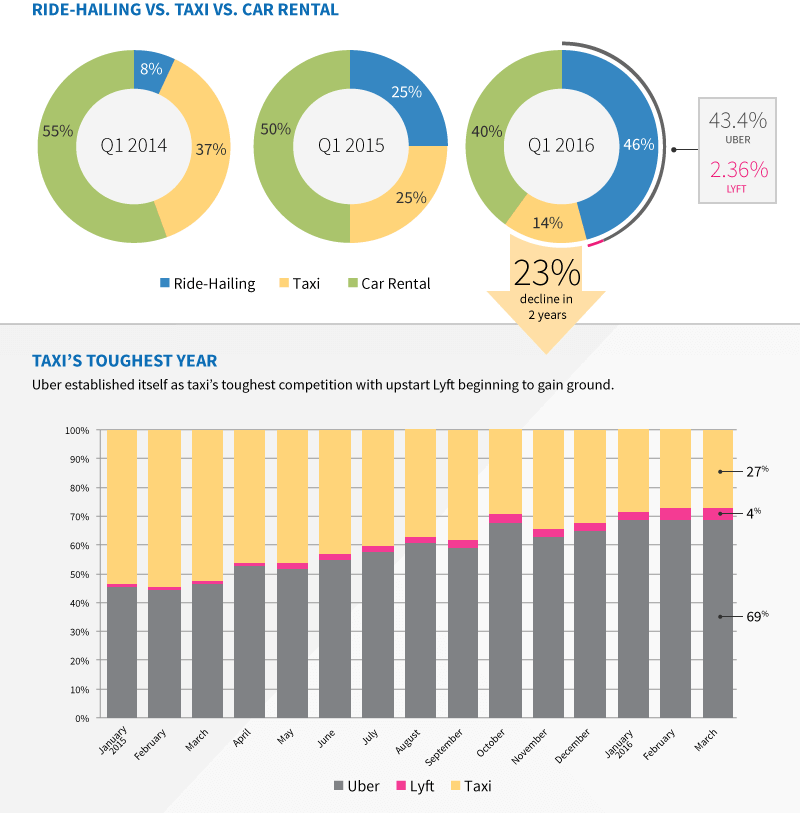
Over the last year, Uber has positioned itself to dominate the corporate travel market with the introduction of Uber for Business, and availability of services in every major US city. Taking rental cars out of the equation, Uber has 69% of the market share for ride-hailing transactions and taxis. Lyft accounts for 4% of the ride-hailing transactions.
Uber is a model for meeting the expectations of the modern business traveler,” said Certify President Robert Neveu. “It’s simple, it’s highly personal—just call up the app right from your smartphone, with your user profile—and its convenience is truly unparalleled.
Given the fact that Uber and Lyft were both launched (and are headquartered) in San Francisco, it is unsurprising to see San Francisco as their top city. New York, Las Vegas and Chicago have a well-established taxi interest and infrastructure.
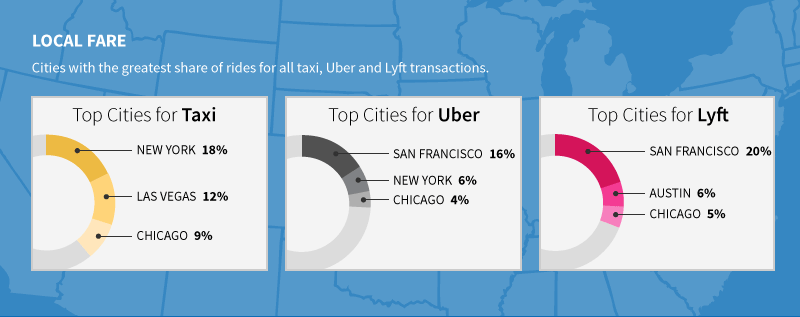
Another issue for taxi services is cost when competing with ride-hailing services Lyft and Uber. Even though business travelers typically are not personally responsible for expenses, most are looking for economical options. Additionally, safety is a top concern among female business travelers, and standing around waiting for a taxi leaves many feeling vulnerable.
Anything that saves time and money while providing real value is going to be a hit with business travelers,” said Neveu.

The final blow to taxi services is user satisfaction. Not only are taxis more expensive, taxis provide the lowest quality user experience (at the highest price). User satisfaction with car rental is also below ride-hailing. This could be due to hidden fees and increased occurrences of unclean rental cars.
Ride-hailing is transforming the marketplace when it comes to ground transportation for business travelers. It will be interested to monitor the trends between ride-hailing, rental cars and taxis over the upcoming year. One thing is for sure, ride-hailing services will continue to shake up the ground transportation market, and taxis will need to make some serious changes to user experience, quality, and price to gain back a more competitive share of the corporate travel market.
What is your preferred method of transportation during corporate travel? Please comment below!
Business Travel Life
Business Travel Life is an online resource supporting the road warrior lifestyle. We give business travelers the tools they need to maintain their wellness and productivity when traveling. The topics we cover include business travel tips, travel workouts, healthy travel hacks, travel products, general travel tips, and industry trends. Our goal is to make business travel a healthier experience – and to make healthy travel practices more accessible to all road warriors.

